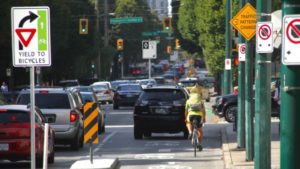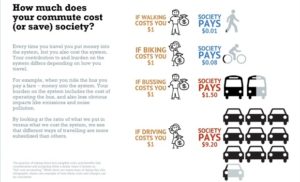A Christchurch advertising agency is turning drivers into cyclists by offering $10 per day to bike to work

A New Zealand company is close to converting its entire workforce from car commuters to bike commuters.
The secret: cold, hard cash.
Christchurch advertising and creative agency Make Collective launched the pay-for-pedal initiative last month, offering staff $5 per day for biking to and from work. The amount doubles to $10 per day if an employee cycles more than half of their annual work days.
“I felt like [money] is the most obvious incentive,” said Make Collective director Tim Chesney, who devised the scheme.
Carrot versus stick
“You know the carrot and stick thing? The reasons everyone thinks they should exercise are more on the stick side — people think, ‘I don’t want to get sick or I don’t want to die young.’
“But it’s not often you come across an incentive on the carrot side. And that’s why the money. If you wake up and it’s cold out or you’re tired, there’s a slight hump to get over,” Chesney said in a phone interview from New Zealand.
“But then you think if I do this I get $10.”

In Christchurch, five of the six staff at Make Collective have taken to two wheels, and the sixth is “working on it.” According to Chesney, the program will cost the company approximately $12,000 a year.
‘Not really that much’
‘If you look at it on a per-staff basis, it’s about $1,000 to $2,000 per person. In the context of a $50,000-to-$100,000-a-year job, it’s not really that much,” he said.
In Vancouver, a number of businesses offer employees cycling incentives, although none appear to be offering cash.
Vancity has a rebate program, which provides up to $1,000 for the purchase of a new bike or e-bike. The tech company, SAP, reimburses employees for the cost of the local bike share program.
And more generally, a few years back, BIKO, arrived in the city, offering to turn kilometres logged on the BIKO app into free craft beer and food.

Navdeep Chhina of the cycling advocacy group HUB, says any program that encourages cycling is worthwhile. However, his group believes building infrastructure like separated bike lanes is the best way to get people out of their cars.
‘Take away free parking’
“Getting people to change that [driving] mindset is much more important than giving monetary incentives,” said Chhina. “A bigger incentive would be to take away the free parking that some businesses offer.”
Chhina points to a recent data journalism project by Discourse Media that compares the real costs of commuting by different methods. According to the study, for every dollar spent by a cyclist, society contributes just eight cents in infrastructure spending. However for every dollar spent by a driver, society pays $9.20.
“When more people cycle for transportation, our communities become happier, healthier and safer,” he said.

Chesney couldn’t agree more — about his own switch to cycling and about the benefits to his company.
“I was a bit overweight and not very healthy and cycling was a simple way I could put exercise back into my daily life,” he said.
“And I also had a gut instinct…if more people cycled and showed up having got their blood flowing, healthier and unstressed, that would be a good thing.”
Worldwide attention
Since word of the pay-for-pedal scheme got out, Chesney’s been inundated with media requests.
“It’s been crazy. I got an email from Slovenia yesterday. Radio stations in Australia and Colombia are ringing me up.
“My advice for companies who may want to do this is just make sure you have the incentives wired up right,” he said.
“We currently have all able-bodied employees, so that makes it straight forward. If you have a more diverse workplace, you’d really have to think of how to make if fair for everybody.”


